Whether you’re an emerging technology startup or an enterprise looking to overhaul your processes or an entire IT infrastructure, chances are you need an expert software development team to bring your vision to life. Unless you have such specialists in house, you’ll have to outsource software engineering tasks. The question is, how could you assemble a winning software development team, and what would its structure look like?
Key factors behind a software development team structure
Every product begins with the people. The way you map your business objectives to the roles in a software development team will likely determine your project’s success. Or failure. So, when designing a software development team structure, make sure it reflects such factors as:
Project type and complexity
Before you step into the recruitment craze, you have to work out the scope of your project. If you’re about to build a product prototype, a team of four may be enough to accomplish the task. But if you’re planning on launching a brand-new application with multiple features and third-party integrations, the number of team members will certainly increase. Here are some ideas of how project scope and a software development team structure may correlate:
| Project scope/stage | Project description | Team size | Team Roles |
|---|---|---|---|
|
Discovery/PoC
|
A proof of concept (PoC) is a small-scale project that helps you test the feasibility of your software idea without committing to a full-blown development. PoC is not a market-ready product. |
Up to 5 specialists |
Product owner (usually on the client’s side), project manager, business analyst, UI/UX designer, and at least one software developer, depending on the complexity of a PoC. |
|
MVP development
|
A minimum viable product (MVP) is an early product version that is limited to the core features and functionality. You can release MVP to the market and elicit user feedback to improve your offering. |
6+ specialists |
Product owner (usually on the client’s side), project manager, business analyst, UI/UX designer, software engineers, test engineers |
|
Product development
|
A full-blown product with all its intended features and functionality |
Agile: usually up to nine specialists; if a project is large-scale, several Agile teams may work together. Waterfall: no team size limit; the specific headcount will depend on the type and complexity of an application |
Product owner (usually on the client’s side), project manager, business analyst, UI/UX designer, software architect, software engineers, test engineers. Optionally: test automation engineers, performance engineers, DevOps engineers, security engineers |
To optimize the software development process, costs, and team composition, you could use low-code and no-code solutions. However, even the simplest software products built with such tools require a business analyst and a software engineer; without technical expertise, you won’t be able to map business requirements against the product’s feature set and configure the components appropriately. Additionally, low-code and no-code development tools are best suited for PoC and MVP projects.
Deadline
How quickly you need to turn your product around will influence the team structure and size, too. Quite obviously, with fewer team members, it may take longer to complete the project. So, if you have an idea of a state-of-the-art product that needs to be developed from scratch and on a tight deadline, you might have to assemble an extended team of senior engineers or a group of full-stack engineers who will be able to cover all needs and deliver results quickly and efficiently.
Development budget
Being inextricably intertwined with the factors above, the available budget would certainly affect every decision you make—from how many team members you can hire to the seniority of specialists you can bring in to how feature-rich your product can be when turned around. To reduce project expenses without sacrificing quality at the initial stages of development, consider opting for any of the Agile project management methodologies. You could deliver in increments, focusing on high-priority features first, and have more cost flexibility.
Software development approach
Whether you opt for Waterfall or Agile would directly impact your workflows and a software development team structure. A project management methodology you choose to go with shapes up the size of your team, the responsibilities of team members, and the relations within the team. Let’s catch up on the key facts about Waterfall and Agile and see how their peculiarities are reflected in the development team composition.
| Waterfall | Agile | |
|---|---|---|
| Software development process |
The development process is divided into distinct sequential phases |
The development process is broken down into two to four-week sprints |
| Project scope |
The scope is defined in advance. Changes are usually limited |
Scope changes are expected and allowed during the development |
| Client involvement |
Requires clients to be available at milestones for deliverables acceptance |
Requires clients participation throughout the project |
| Feature prioritization |
Features are prioritized at the start of a project on a WBS basis |
Features are prioritized at the start of each sprint and issues are managed according to priorities |
| Focus and mindset |
Project mindset. The focus is on accomplishing the project |
Product mindset. The focus is on delivering value for the customer |
| Quality assurance |
Software testing follows software engineering |
Testing is performed in parallel with the development |
| Pricing model |
Risks are lower with Fixed Price |
Works well with Time & Material |
So, how do these differences influence the software development team structure?
A traditional Waterfall project team is built based on hierarchical relations between team members, so there are managers and subordinates with well-defined responsibilities. Such a team structure grants a project manager more control over the project workflows and makes them responsible for critical decisions.
Agile teams, on the other hand, are self-organized and self-managed. Still, there are organizational leaders, like a scrum master in Scrum or a service delivery manager in Kanban. Their responsibilities are quite different from the responsibilities of a traditional Waterfall project manager, though, as they are focused more on fostering relationships within the team and creating a working environment where each team member can be effective. Spanning a maximum of nine to ten people, Agile teams allow a certain degree of autonomy, so the team members have the freedom to prioritize their workloads and shape their workflows the way they want.
The table below summarizes the key differences between the teams following sequential approaches and those adhering to Agile.
| Waterfall team | Agile Team |
|---|---|
|
Top-down management. The project manager is responsible for delivering results |
Self-management. Every team member is responsible for the delivered results |
|
A team may work on several projects at a time |
A team focuses on one project |
|
Focus on evaluating the performance of each individual |
Focus on assessing the performance of the whole team |
|
Distinct roles and titles |
Cross-functional talent |
|
No team size limit |
Two-pizza approach with four to ten people per team |
|
A lower degree of team synchronization due to a larger team size and a vertical hierarchy |
Small teams with a high degree of coordination and synchronization |
Who is who among the members of a software development team?

Business analyst (BA)
-
Understands customer’s business processes
-
Translates customer business needs into requirements
A business analyst dives deep into a customer’s workflows and analyzes stakeholder feedback to help a client formulate what their wants look like and align a customer’s vision with what a development team is producing. They translate an abstract product idea into a set of tangible requirements.
A BA enriches a product development team with a profound understanding of business processes from various perspectives and the ability to shape up a software product that creates maximum business value. A business analyst may step in even before a software development team structure is defined and continue to bridge the gap between the customer and the team during later stages of development.
Product owner (PO)
-
Holds responsibility for a product vision and evolution
-
Makes sure the final product meets customer requirements
Holding more responsibility for a product’s success than any other development team member, a product owner is a decision-maker. Balancing both business needs and market trends, they define a business strategy, shape up the product vision, make sure it satisfies customer needs, and manage a product backlog. Associated mainly with flexible Agile environments, a product owner is particularly useful in scenarios where requirements and workflows frequently change.
The responsibilities of a BA and a PO sound quite similar. What’s the difference between the two, and is there a need for both in one project?
The critical difference is that a product owner provides the vision of a product without diving deep into how it is technically implemented, while a business analyst bridges the gap between a customer and a team, being a bit more on the technical side. So, a PO is more customer-oriented, while a BA is often more focused on the technicalities of the project. Professional business analysts are usually qualified to take over some of a product owner’s tasks, like managing the product backlog and modeling workflows, among other responsibilities.
In outsourcing scenarios, a product owner can be someone from the client’s side, a startup founder, for example. They possess deep domain expertise but might lack technical knowledge. They can work in tandem with business analysts to fine-tune product requirements.
Project manager (PM)
-
Makes sure a product or its part is delivered on time and within budget
-
Manages and motivates the software development team
In sequential models, a project manager is responsible for distributing tasks across team members, planning work activities, and updating project status.
In Agile projects where the focus is on self-management, transparency, and shared ownership, a PM sets up the vision of a product, maintains transparency, fosters communication, searches for improvements in the development process, and makes sure a team delivers more value with each iteration.
Some people believe that there’s no need for a PM in an Agile environment with similar roles, like a service delivery manager or a scrum master. However, if your company is running multiple Agile projects simultaneously, having dedicated PMs is vital. They would connect the dots between high-level stakeholder requirements and day-to-day task execution on a team level, while, say, a scrum master would manage the workload within the team.
UI/UX designer
-
Transforms a product vision into user-friendly designs
-
Creates user journeys for the best user experience and highest conversion rates
There are two aspects to the product design process—user interface (UI) and user experience (UX) design.
A UI designer devises intuitive, easy-to-use, and eye-pleasing interfaces for a product, while the UX part stands for thinking out an entire journey of a user’s interaction with a product. A UX designer is thus involved in such activities as user research, persona development, information architecture design, wireframing, prototyping, and more.
The UX part stands for thinking out an entire journey of a user’s interaction with a product. A UX designer is, thus, involved in such activities as user research, persona development, information architecture design, wireframing, prototyping, and more. A UI designer, in turn, devises intuitive, easy-to-use, and eye-pleasing interfaces for a product.
A UI/UX designer would accompany you throughout the development lifecycle, helping you achieve business goals via functional and engaging user experiences, as well as analyzing, evaluating, and enhancing those experiences over time.
Software architect
-
Designs a high-level software architecture
-
Selects appropriate tools and platforms to implement the product vision
-
Sets up code quality standards and performs code reviews
An architect is an expert-level software engineer who makes executive software design decisions on behalf of an app development team. You will need one if you deal with a software product with complex requirements or legacy software that calls for profound changes. A software architect decides which services and databases should communicate together, how integrations should work, and how to ensure that the product is secure and stable.
Software developer
-
Engineers and stabilizes the product
-
Solves any technical problems emerging during the development lifecycle
A software developer does the actual job and codes an application. And just like an app features a front end and a back end, there are front-end and back-end developers.
Front-end developers create the part of an application that users interact with, ensuring that an app offers an equally smooth experience to all—no matter the device, platform, or operational system.
Back-end developers, in turn, implement the core of an app—its algorithms and business logic. Experienced back-end developers not only write code but also do the tasks of an architect—for example, devise an app architecture or design and implement the necessary integrations.
There are full-stack developers as well. They can handle all the work at once—from clients to servers to databases and all the needed integrations.
Quality assurance (QA) engineer
-
Makes sure an application performs according to requirements
-
Spots functional and non-functional defects
The job of a quality assurance engineer is to verify whether an application meets the requirements—both functional and non-functional. Functional requirements define what an application should do, while non-functional requirements specify how it should do that. To verify both, QA specialists run various checks, followed by analyzing the test results and reporting on the application quality.
They evaluate an application from different angles—be it functionality, usability, security, or performance (hence, many types of testing). To keep track of the executed checks and ensure that all the requirements are covered with tests, QA specialists may create different kinds of testing documentation—from test scenarios to test protocols to test results reports. And experienced QA engineers design and implement quality assurance processes and procedures that help prevent defects at later stages of development.
Test automation engineer
-
Designs a test automation ecosystem
-
Writes and maintains test scripts for automated testing
A test automation engineer is there to help you test faster and better. To enable that, they develop test automation scripts—small programs that provide reliable and continuous feedback on application quality without any human involvement.
A skilled test automation engineer would help you choose which parts of an application are suitable candidates for automation and what’s better to be tested manually. They would also design a test automation ecosystem that is easy to maintain and update. Finally, they’ll make sure that your test automation initiative generates as much value as possible at a reasonable cost.
DevOps engineer
-
Facilitates cooperation between development and operations teams
-
Builds continuous integration and continuous delivery (CI/CD) pipelines for faster delivery
Even in Agile environments, development and operations teams can be siloed. DevOps engineers serve as a link between the two teams, unifying and automating the software delivery process and helping strike a balance between introducing changes quickly and keeping an application stable. Working together with software developers, system administrators, and operational staff, DevOps engineers oversee and facilitate code releases on a CI/CD basis.
Why is setting the right team essential for project success?

Setting up the right team is the crucial factor in a project’s success, as it is the project team that is responsible for delivering value throughout the project.
It’s a common scenario when a company hires a dedicated team but fails to balance roles and responsibilities. For instance, deciding to go without a product owner—the ultimate visioner responsible for crafting a product that meets customer needs—quite often leads to releasing software that fails to win the hearts of its potential users.
At a daily operations level, too, companies can miss opportunities due to poorly thought-out staffing decisions. A project manager may, for instance, overlook the need for a DevOps engineer, thus missing out on numerous benefits. For example, in one of our projects, introducing DevOps helped our customer reduce release cycles from ten to two weeks, implement 30+ new features quickly, and achieve a code coverage of 80%.
Mistakes can happen when selecting developers with the right expertise level. Striving to reduce costs, you may feel reluctant to hire senior engineers and opt for less experienced staff. However, to ensure the right proportion of expertise and new perspectives, we would advise staffing your team with both an expert-level developer and those with less experience; the former will ensure technical guidance or even act as a virtual CTO, while the latter would bring fresh ideas to the table.
Four steps to take to assemble a winning software development team
Step 1: Analyze the prerequisites and determine the team size
Evaluate your business goals, the complexity of your project, the available budget, and deadlines to make up your mind about a suitable approach to project management. Based on that, estimate the size of your team. If you choose to go with Agile, the perfect team would span four to ten people. Waterfall teams, in turn, are usually quite large and may span up to 15 people. To avoid any management complexities, it may be worth dividing a large team into several sub-teams, each with a lead of its own.
Step 2: Choose a team structure that fits your project
There are three types of team structures—specialists, generalists, and hybrid teams, and each has its pros and cons. When choosing an appropriate team structure, consider this:
| Upsides | Downsides | Appropriate for | |
|---|---|---|---|
| Specialists |
Team members are experts in their fields. They can work fast and deliver high-quality output. |
Potential communication issues and a chance of building software whose components don’t fit together as smoothly as they could |
Projects that require deep expertise in a specific narrow area |
| Generalists |
Team members boast a wide range of skills and are flexible enough to apply their knowledge across a vast range of areas |
Potential risks due to a lack of deep expertise |
Projects of medium complexity managed according to Agile techniques |
| Hybrid |
Specialists cater for the technical issues that require narrow expertise, while generalists are responsible for integrations and developing software as a whole |
Potential management issues due to mixing people with such diverse skill sets. Specialists and generalists can also approach their daily tasks differently, requiring variable supervision techniques. |
Large-scale, complex projects with tight deadlines |
Step 3: Ensure you have all the necessary software development team roles covered
If you already have in-house resources, evaluate the skills gaps you need to fill in and search for targeted talent to extend your team. If you start anew, make sure your team is balanced and can cover different aspects of development.
Step 4: Facilitate effective communication
Select project management software to speed up daily operations and ensure transparency. The most popular project management tools include Jira, Trello, Hive, Smartsheet, and others. And to establish productive communication, encourage using messaging apps, like Slack or Microsoft Teams, as they are simpler and faster to use. Don’t forget about verbal communication, too. Video conferencing and regular project briefings may come in handy to resolve misunderstandings and boost communication.
Augment your staff with a capable software development team from ITRex
Whether you are looking for traditional software development or want to enhance your operations with cutting-edge technologies, such as artificial intelligence (AI) and the Internet of Things (IoT), we will supply you with the right talent. We have a pool of niche professionals to choose from, including AI consultants, data experts, and IoT specialists, in addition to talented designers and business analysts.
Our experts have worked in different industries, including healthcare, retail, manufacturing, and media and entertainment. When you share your project details, we will send CVs of the most suitable candidates for your approval. You will interview them and make the final recruiting decisions based on your software development team structure preferences.













